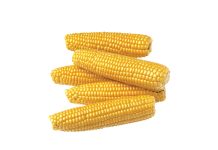
 Ikageng Maluleke, agricultural economist, Grain SA
Ikageng Maluleke, agricultural economist, Grain SAGlobally over the past 20 years, soybean has been dynamic, with double the area planted and expectation of further expansion in future. Developments in the global soybean market since 2020 have resulted in the support of prices. This has led to the expansion in the area planted in 2020/2021 and expectations for an increased area for 2021/2022.
According to the International Grains Council (IGC), it is expected that global production will be at a record of 380 million tons, mainly owing to increases in Argentina, Brazil and the USA. Demand is also expected to rise with increased crushing for Brazil and China’s growing demand in the feed sector. Stock levels, which have been a price driver in past seasons due to the low stocks to usage ratios in major producing countries, are expected to recover somewhat in 2022 – even though they will remain below the average.
Local prospects
Over the past decade (2010 to 2020), the area under soybean plantings in South Africa has more than doubled and production has increased by 76%. The significant investment in the soybean sector is starting to show potential with increased hectares planted and yield increases coupled with good growing conditions, especially in the past season and potentially good prospects for the coming season. The outcome is an increase in oilcake and oil production, which is assisting in gradual import replacements.
Furthermore, investment and policy were developed to attract new seed technology for soybeans into South Africa. The breeding and technology levy was introduced into the market to incentivise the development of new cultivars and technology. Yield increases are expected as new cultivars will be more adapted to local growing conditions and with producers’ knowledge in terms of local production practices increasing.
Graph 1 indicates long-term trends in soybean production, yield, the area planted and commercial demand. There is an upward trajectory in all aspects. Over the years, soybean oilcake production has increased, with imports slowly declining. Import substitution has gained momentum since 2014 and the amount of soybean-demanded crushing to fulfil the current oilcake usage remains relatively high. South Africa is slowly closing the gap with surplus soybean production, while expansion of local crushing capacity is currently enough to service the current and additional demand.

Source: Grain SA
According to a recent report of the Crop Estimates Committee (CEC) on intentions to plant, the expectations are that the intended plantings of soybeans show an increase of 11,81% or 97 700 ha compared to the previous season – from 827 100 ha to 924 800 ha. This comes as no surprise, given the price incentive for soybeans as well as the excessive increases in fertiliser and agrochemical costs in the market. These increases do not bode well for maize production and rather favours oilseeds, given the lower input costs of the latter. However, it is not advised that producers plant oilseeds without applying fertiliser, especially if long-term effects are considered.
Given the CEC report, Table 1 shows different scenarios that might occur in the new season, based on low, average and high yields. The most likely scenario is that of an average yield (scenario 2). With this scenario in mind, production will be around 1,8 million tons. Given local demand of about 1,6 million tons, there will be a surplus on the market. Thus export markets will be required to remove the pressure off local prices and to stabilise the market. Also keep in mind that there is already a carry-over stock of 267 000 tons.
 Exploring new markets to reduce carry-over stocks
Exploring new markets to reduce carry-over stocks
There has been a positive response from producers with regard to increasing production, while crushing capacity has also been ramped up. It is imperative that South Africa finds lucrative markets for its surplus soybeans to maintain a good balance on the market. One of the target markets for South African soybean exports is China. The Chinese protocol for soybean exports that was initiated in 2019 is currently in the final stages of ratification – hopefully trade will start in the new season. Various other markets already exist (like southern Africa) and can be capitalised on, while other markets require derivatives like oil and oil cake, namely the Middle East, the European Union (EU) and East Africa.
The main soy derivative products produced for the human food market are full-fat soybean meal, white flakes, texturised vegetable protein (TVP), soy concentrates and soy isolates. According to a study by the Bureau for Food and Agricultural Policy (BFAP) on soy products used for human consumption in South Africa (2021), only about 1,6% of soybeans crushed locally are destined for the human market – either as white flakes or as TVPs to be used in food value chains. The remaining 98,4% goes into the animal feed value chain as full-fat soybean meal (10,3%) and soybean oil or oilcake (88,1%). In South Africa, mainly white flakes and TVPs are produced to be sold as final products to food companies, used as inputs in food value chains or exported.
According to Myburgh (2020), soybeans have high nutritional properties. Its high protein content makes it a good protein substitute in the diet and may be beneficial to the under-nourished, especially in Africa where there is widespread protein-energy malnutrition. Soy-based products and oil are usually cheaper, with multiple benefits and it is a healthier alternative. Therefore, it is critical to consider and exploit the potential within these markets to support and grow soybeans for the human consumption market within South Africa. Local and international food manufacturers are already making efforts to exploit the potential by bringing soy-based foods or foods with soy as an ingredient to the consumer. Although there is potential to expand the market in South Africa, large amounts of investment for processing are required as well as consumer education to change perceptions regarding soy products.
Global demand
The direct human consumption market makes up one-fifth of the world’s soy usage (Myburgh, 2020) – most of which is first processed into soybean oil. Typical soy products such as tofu, soy milk, tempeh and edamame beans account for just 7% of global demand. Direct human food includes all non-animal-sourced foods from soy excluding oils. The highest demand for soy food products comes from Asia, namely China, Indonesia and India. However, the product offering of soy food products has increased significantly, with the USA and Europe showing growth rates in product offerings of more than 80% in recent years (Myburgh, 2020). Graph 2 indicates the top 14 biggest markets for soy for human consumption.

Source: USDA, PSD, 2021
According to BFAP (2021), South Africa exported the most derived soy protein products to Africa between 2019 and 2020, with the top ten importing countries being Zimbabwe, Zambia, Saint Helena, Malawi, Namibia, Mozambique, Botswana, Eswatini, the Democratic Republic of Congo and Lesotho. Other export markets include the United Arab Emirates, the United Kingdom, the USA, China and France. With the rapid increase in demand for TVP, especially in Zimbabwe, there is an indication of the massive potential to expand the human consumption market in South Africa by increasing exports to Africa.
Conclusion
There is potential for expansion of the soybean market, especially for the human consumption market, competitiveness considered. Exporting opportunities will help prices remain competitive and could increase job creation and export earnings for the sector. Although South Africa has sufficient average quality for exports, the importance for the export market is to have a consistent quality supply. Therefore, storage and selection of production areas remain important.
References
- BFAP, 2021. An overview of derived soy products used for human consumption in South Africa. Published 5 November 2021. [Online] Available from: https://www.bfap.co.za/an-overview-of-derived-soy-products-used-for-human-consumption-in-south-africa/
- Myburgh, J. 2020. Plantproteïene wil hulle eet. SA Graan/Grain. Published 8 September 2020. [Online] Available from: https://sagrainmag.co.za/2020/09/08/plantproteiene-wil-hulle-eet/



















